Pruning shear is an indispensable tool for every gardener. It allows pruning and maintaining plants with precision, favouring their growth and flowering. However, incorrect use of pruning shear can damage plants and even cause injury to you. In this guide, we offer practical advice to hold and use your pruning shear correctly.
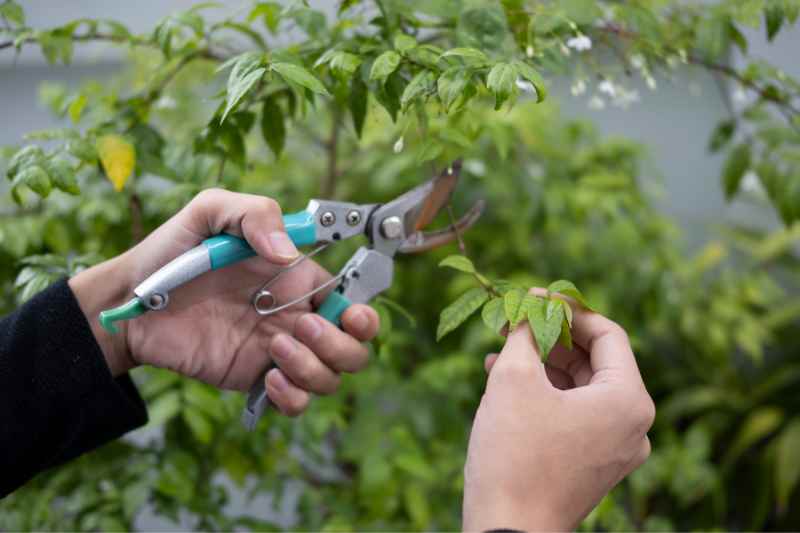
Pruning shear in a nutshell
Pruning shear is used to prune plants, remove dead or diseased parts, and support healthy, balanced growth. This precise cutting action directs plant energy to desired areas, thereby stimulating flowering and fruiting. By removing superfluous or obstructive branches, pruning shear also helps maintain garden aesthetics, giving shape and structure to vegetation. Additionally, regular use of pruning shear helps prevent spread of diseases and parasitic infestations by removing affected parts before they harm overall plant health.
Different types of pruning shears and their uses
- Bypass pruning shear and long-bladed harvesting scissors : Ideal for precise cuts, this type of pruning shear works like a pair of scissors, with two blades that pass each other to produce a clean cut. It is particularly suited to pruning flowers, fine herbs, and tender young shoots. Its clean, precise cut promotes rapid healing of plants.
- Anvil pruning shear : Fitted with a single blade that closes onto a flat surface, the anvil, this pruning shear is designed for tougher cuts. It is perfect for pruning dead branches or harder wood, where extra pressure is needed. However, it is less precise than a bypass pruning shear and can crush soft tissues of living plants.
- Ratchet pruning shear or ratchet-style: Equipped with a ratchet mechanism, this type of pruning shear multiplies cutting force, making it easier to prune thicker branches. It is ideal for people with less hand strength or for more demanding pruning tasks.
- Electric or battery-powered pruning shear: For intensive gardening work, electric pruning shear provides powerful cuts with minimal physical effort. It is particularly useful for large gardens or orchards, where pruning volume can be significant.
please note : Certain gardening tasks require specialised pruning shears suited to specific needs. For example, vine pruning shears are designed to make precise, clean cuts on finer stems, often necessary for vine pruning. For fruit trees, pruning shears with a larger cutting capacity and ergonomics adapted to thicker branches are recommended. These specialised pruning shears help make appropriate cuts that promote plant health and productivity, while reducing physical effort required.
How to hold pruning shear correctly?
Correct grip for an effective cut
- Holding the tool : Grip the pruning shear firmly in your dominant hand (note that there are pruning shears for right-handers or left-handers). Your fingers should comfortably wrap around the handles without squeezing excessively. Thumb should be positioned on one handle and other fingers on the other, allowing a smooth, controlled cutting motion.
- Balance and force : The hand not holding the pruning shear should support the branch or stem to be cut, ensuring a stable, precise cut. Cutting force should come mainly from the palm and fingers of the hand holding the pruning shear, not from the wrist, to avoid strain.
- Cutting angle : Tilt the pruning shear slightly so blade is positioned at a 45-degree angle to the branch. This promotes a clean cut and quick healing of the plant.
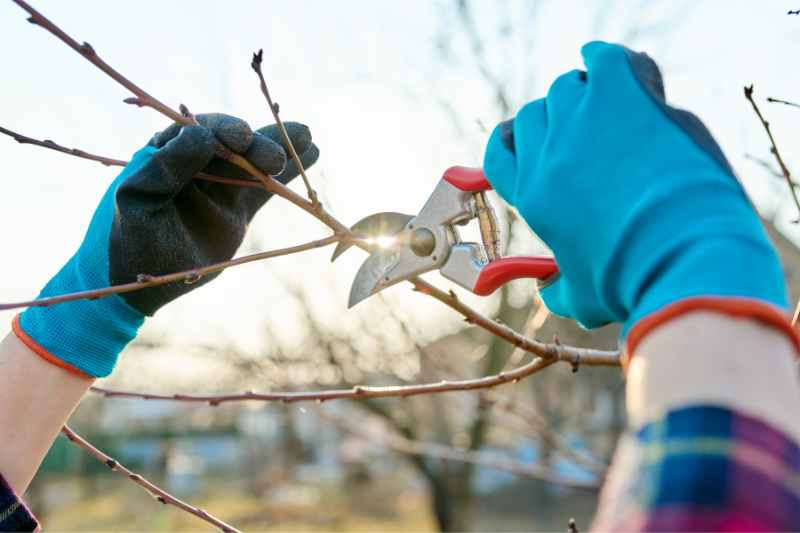
Positioning of hands and fingers
- Finger positioning : Index and middle fingers should be the main fingers used to operate the pruning shear. They provide the necessary force for the cut while allowing precise control.
- Handle and thumb : Thumb should remain stable on one handle, while the other fingers operate the moving handle. Ensure thumb is not in the blade path when closing the pruning shear.
- Rest and ergonomics : Choose a pruning shear with an ergonomic handle suited to the size of your hand (yes, pruning shears come in different sizes!). This reduces fatigue and risk of developing musculoskeletal disorders from repetitive use. Take regular breaks, especially during long pruning sessions, to rest hands and wrists. Note that there are also pruning shears with rotating handle to reduce fatigue during extended pruning.
How to use pruning shear correctly?
First, ensure your pruning shear is clean and well sharpened. A dull blade can damage plant tissues and make cutting more difficult. Clean pruning shear blades between cuts using 90% alcohol, especially when moving from a diseased plant to a healthy one, to avoid spreading disease. Oil joints and blades to ensure smooth movement and reduce wear. Check regularly that all parts are tightened and in good condition. A poorly assembled pruning shear can come apart during use, which is dangerous.
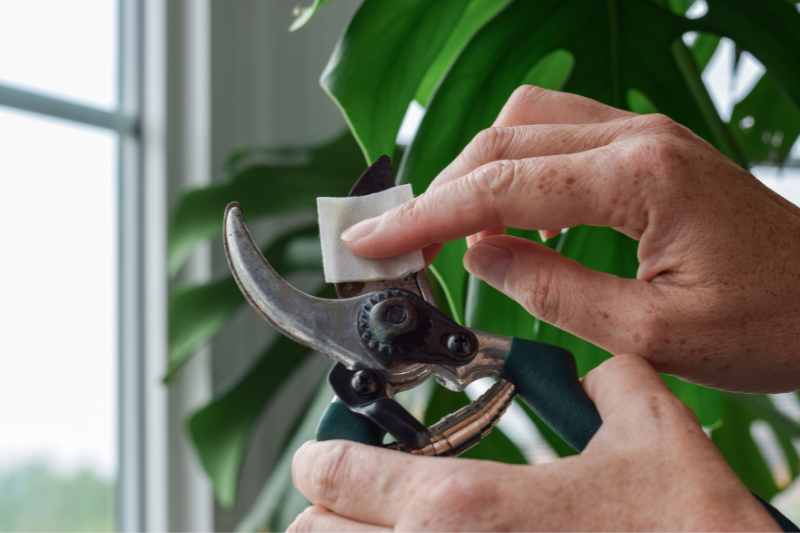
Then, as already mentioned, pay attention to cutting angle: a 45-degree angle is ideal for most cuts, as it allows better healing and prevents water from collecting on the wound. And importantly: sharp blade of pruning shear should be oriented toward the part of the plant you wish to keep. This allows a cut closer to the bud or branch you are not cutting, promoting quicker and cleaner healing.
Of course, ensure fingers and other body parts are always kept clear of blade path when cutting (this advice applies to all objects that cut, crush, eviscerate or eject projectiles...). Never force a pruning shear to cut a branch that is too thick. If a branch resists, use a more suitable tool such as a lopper or a saw.
Wear gardening gloves to protect hands from thorns and cuts, and safety goggles if pruning at face level. Don’t laugh — scratches to the cornea happen faster than you think (and they’re painful!).
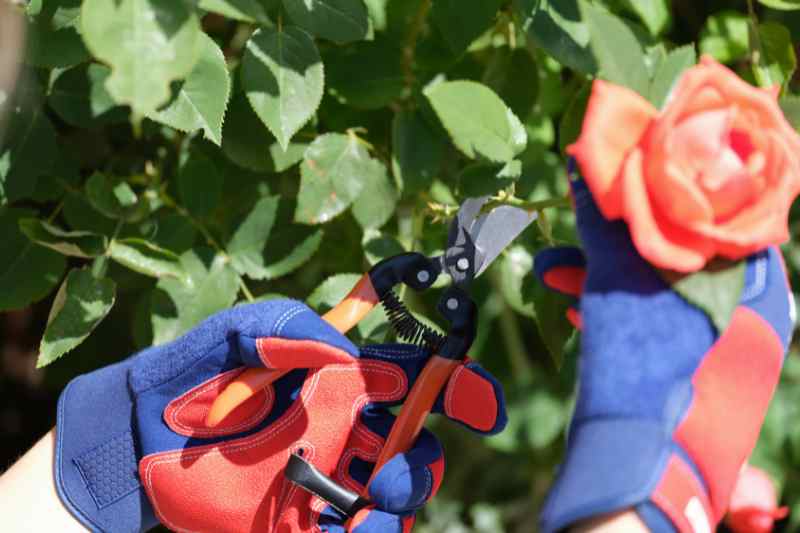
Quick reminder about pruning timing in general: consider pruning calendar for each plant type. Some plants are pruned in late winter, others after flowering. And don’t prune too much at once. It’s better to proceed in small steps, assessing effect of each cut, rather than cutting too much and regretting it.
Oli's little note : To ensure maximum longevity of your pruning shear, clean it thoroughly after each use and dry it to prevent rust. Store in a dry place, protected from moisture and bad weather. A wall hook or toolbox can be ideal to keep it safe and accessible. Before winter, clean and sharpen your pruning shear (using a sharpening stone or a pruner-specific sharpener), and apply a light coat of oil to blades and joints to prevent rust.
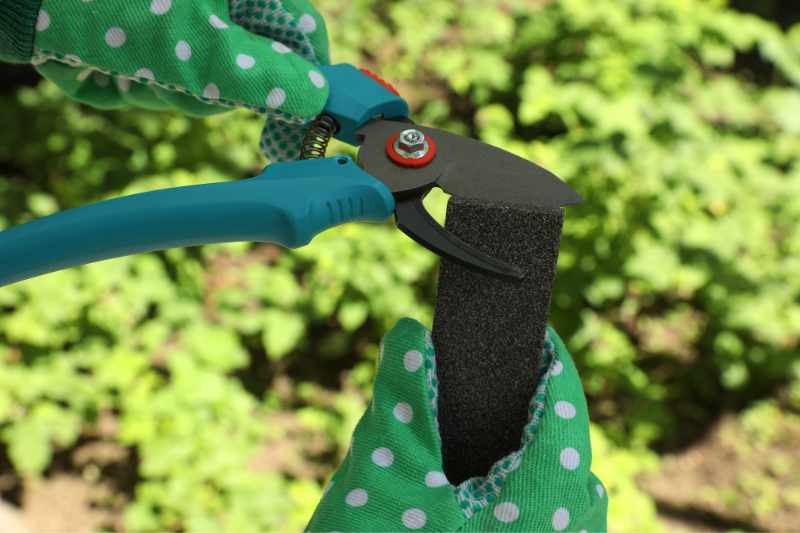































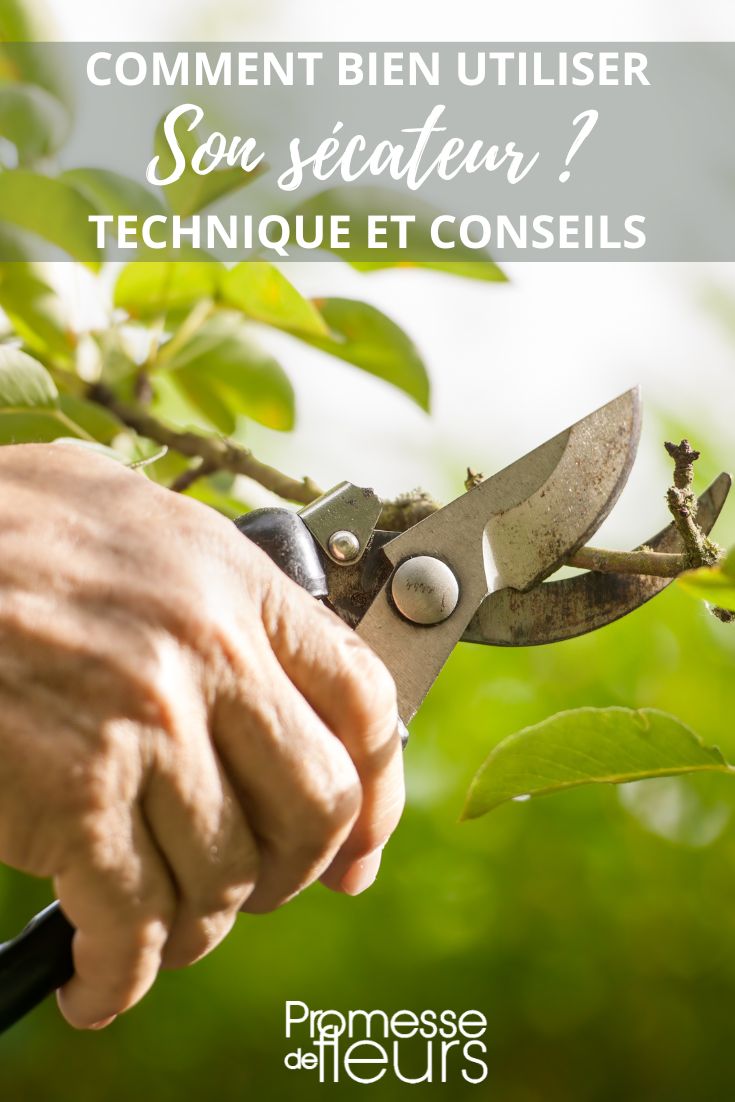
Comments